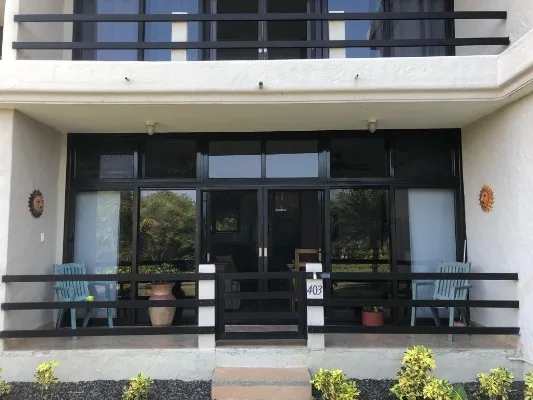Gualaceo families suffer as thousands from the town live overseas; mayor tells them, it’s ‘time to come home’
Marco Tapia, the 31-year-old mayor of Gualaceo, a town of 40,000 in the outskirts of Cuenca, wants his people back.
"Basta, Gualaceños! You've made enough money,'' said Tapia during an interview last Sunday in the modest home a relative in the United States has lent him in the center of town. "It's time to come home.''
For Tapia, a former physical educ ation instructor now studying law and a novice politician who is a firm supporter of President Rafael Correa, the negative aspects of migration — family separation, divorce, alcoholism and even drug abuse among youngsters abandoned by parents — far outweigh its benefits: At least 80 percent of the local economy is fully dependent on remesas, remittances from overseas.
ation instructor now studying law and a novice politician who is a firm supporter of President Rafael Correa, the negative aspects of migration — family separation, divorce, alcoholism and even drug abuse among youngsters abandoned by parents — far outweigh its benefits: At least 80 percent of the local economy is fully dependent on remesas, remittances from overseas.
And just about everyone here, including the mayor whose education was and continues to be paid by a brother in New York and who lives in a house built by a migrant, has benefited from migration.
Yet, the town's priest, Father Julio Castillo echoes the mayor's concerns and describes the massive migration of his people as a "grave problem.''
"You can buy a house, but you can't buy love,'' he said, referring to the countless children who have been left behind by one or two parents who have migrated precisely to give their children a better life at home. He said that at least 60 percent of the 3,000 children, ages 8 to 14, who attend catechism classes in his parish have no parents at home. They are being raised by relatives, family friends, or older siblings.
This town in a lush valley laced by mountains and crisscrossed by rivers is dotted by two, three, even four or five-story houses that seem as if they had been lifted from the pages of a glossy U.S. magazines. They have been built by migrants, mostly in the United States, but also in Spain, Italy and Israel.
Many of the houses stand empty, the grass grown and the windows dusty, waiting for their owners to come home.
Tapia estimates there are 6,000 Gualaceños in Patchogue, a seaside village on New York's Long Island, that 20 months ago became the focus of attention when a group of teenagers beat and killed Marcelo Lucero, an undocumented immigrant who grew up here in a dark, two-bedroom apartment steps from the town's main plaza. His killer, Jeffrey Conroy, 17 at the time, was convicted and sentenced to 25 years in prison. The killing, at a time of growing dissatisfaction in the United States with illegal immigration, was classified as a hate crime.
To entice migrants to return, the government of President Correa has started a program known as plan retorno, which allows migrants to return with all they need to set up a home and/or a business without paying taxes for items such as a new car, an industrial-size stove or a coffee maker. According to figures cited in a government website, 3,279 Ecuadoreans had returned with such a plan as of last March.
In Gualaceo, no one seems to know how many have returned, but the mayor said he knew of at least 20 who had come home.
One of them is Jose Grijalva, 38, who lived in Medford, the town next to Patchogue, in Long Island for 10 years and returned home four months ago. He and his wife, Diana, have set up a coffee shop, La Panera, that artfully combines typical Ecuadorean baked products like suspiros and empanadas with cappuccinos and lattes and, as soon as he can set up the sandwich press, Cuban sandwiches, which Grijalva said he learned to make in an Irish-owned deli in New York.
He came back, he said, because his work hours were cut and his wife lost her well-paying job as a factory supervisor. Equally important, he said, he saw no future for his 17-year-old son who, like him, was undocumented and couldn't work legally, even if he were able to attend college.
And so, conveniently and possibly for the first time, the stated migrant policy of Ecuador is in line with the stated immigration policy — or lack of it — of the United States.
Gualaceo is one of many communities in southern Ecuador to see many of its sons and daughters head overseas. The town of Giron, south of Cuenca, tells a similar story. A fact that surpises many is that Ecuador has the highest per capita rate of citizens living overseas of all Latin American countries.
The United States says it wants undocumented immigrants to go home, even though a large portion of our economy is supported by the low-paying work of immigrants; Ecuador says it wants his people back, even though remesas are the second largest source of income in the country, second only to oil.
It's probably a good thing for the economy of both countries that not many Ecuadorean migrants have taken their government's offer. (Critics of the plan retorno observe that, without jobs waiting for them at home, few people will return.) As to what impact their reluctance to go home will continue to have for the torn families of Gualaceo: That story, sadly, is still unfolding.
Credit: By Mirta Ojito, www.miamiherald.com; photo caption: small church in the green hills above Gualaceo





















